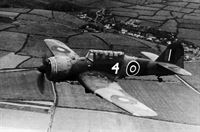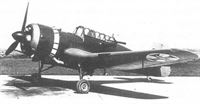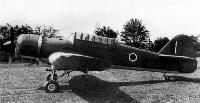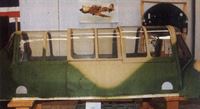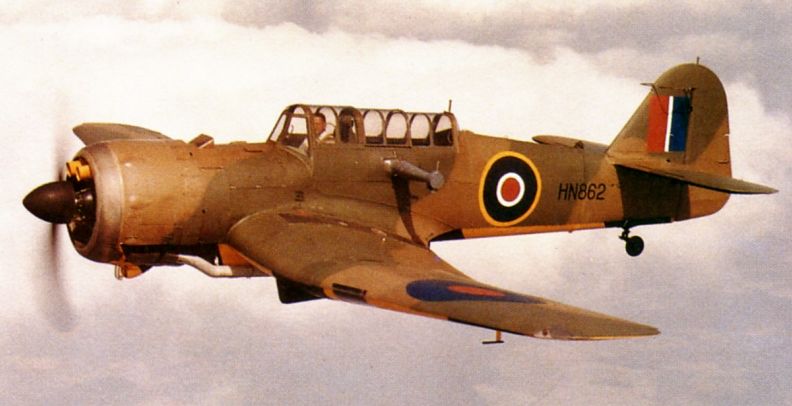
Miles M.25 Martinet, M.37 Martinet Trainer и M.50 Queen Martinet
До выхода спецификации Министерства авиации 12/41 стандартной практикой британских ВВС было использование в качестве буксировщиков мишеней устаревших самолетов. Накануне начала войны недостатки такого подхода стали особенно очевидными, что и привело к формированию технического задания на специализированный буксировщик. Прототип M.25 выполнил первый полет 24 апреля 1942 года, его спроектировали на основе Master Mk II, от которого M.25 отличался удлиненной носовой частью фюзеляжа для компенсации массы буксировочного оборудования. В доработанной кабине установили лебедку с приводом от электромотора или ветряка, оборудовали комфортное место для оператора и отсек для мишеней. На вооружение буксировщик приняли под обозначением Martinet TT.Mk I, в 1942-1945 годах построено 1724 самолета.
В 1946 году появился M.50 Queen Martinet, разработанный согласно спецификации Q.10/43. Буксировщик M.50 представлял собой беспилотный, управляемый по радио, вариант Martinet. 11 самолетов Queen Martinet построено заново, еще 54 переделано из Martinet. Проектировалось еще несколько модификаций базовой модели, включая буксировщик планеров, близкий по конструкции к Master GT.Mk II, и двухместный учебный самолет (построено два прототипа). Шесть Martinet после войны получили гражданскую регистрацию, четыре из них продали в Швецию, где их использовала гражданская компания "Svensk Flygjarst", специализировавшаяся на буксировке мишеней.
ТАКТИКО-ТЕХНИЧЕСКИЕ ХАРАКТЕРИСТИКИ
Miles M.25 Martinet
Тип: двухместный буксировщик мишеней
Силовая установка: один 9-цилиндровый звездообразный мотор Bristol Mercury ХХ/ХХХ мощностью 870 л. с.
Летные характеристики: максимальная скорость на высоте 1770 м - 386 км/ч; дальность 1117 км
Масса: пустого 2105 кг; максимальная взлетная 3062 кг
Размеры: размах крыла 11,89 м; длина 9,42 м; высота 3,53 м; площадь крыла 22,48 м2
- Описание
Фотографии
-
Мировая Авиация 194
Регистрационный номер: HN862 [2] Martinet TT.Mk I в один полет могли брать до шести мишеней в виде флагов или рукавов.
-
Aviation Historian 1 / G.Warner - Why was the "Bristol" Mercury so long lived?
Регистрационный номер: HN862 [2] Powered by a Mercury Mk XX or XXX, the Miles Martinet was the first aircraft to enter RAF service designed from the outset as a target-tug; it first flew in April 1942. Its specialised duties called for high continuous power output and special attention was paid to the cooling of its Mercury engine.
-
Aeroplane Monthly 1990-04 / A.Lumsden - Miles Martinet /Take a card/ (1)
Регистрационный номер: LR244 [2] The second prototype Martinet I, LR244. The lower photograph is dated July 1942, three months after the maiden flight of first prototype LR241, which took place on April 24. The first RAF aircraft designed from the outset as a target tug, the Martinet was powered by an 870 h.p. Bristol Mercury XX or 30.
-
Aeroplane Monthly 1990-04 / A.Lumsden - Miles Martinet /Take a card/ (1)
Регистрационный номер: HP428 [2] Martinet HP428 shows off its high-visibility target-tug underside, striped in yellow and black. Note, though, that the elevators are all-yellow and the tailplane all-black.
-
Air-Britain Aeromilitaria 1981-02
Регистрационный номер: HP428 [2] Martinet HP428 served with No. 7 Air Gunners School at Stormy Down between April 1943 and August 1944
-
Aeroplane Monthly 1990-04 / A.Lumsden - Miles Martinet /Take a card/ (1)
This view of an RAF Martinet shows part of the target-towing gear beneath the centre-section.
-
Aeroplane Monthly 1996-03 / T.Hooton - Nocturnal navigator (2)
Регистрационный номер: HN861 [2] Designed from the outset as a wartime target-tug, the Miles Martinet was based on the Master trainer. After the war the Martinet served with air gunnery schools and operational training units in addition to Anti-Aircraft Co-operation squadrons. The all-wooden aircraft was powered by an 870 h.p. Bristol Mercury radial engine.
-
Aeroplane Monthly 1990-04 / A.Lumsden - Miles Martinet /Take a card/ (1)
Регистрационный номер: HN861 [2] Martinet TT.1 HN861, the first aircraft of the second production batch. A total of 1,724 Martinets was delivered between 1942 and 1945, the majority going to the RAF and Fleet Air Arm although a few were sold in Sweden.
-
Aeroplane Monthly 1990-04 / A.Lumsden - Miles Martinet /Take a card/ (1)
Регистрационный номер: LR244 [2] The second prototype Martinet I, LR244. The photograph is dated July 1942, three months after the maiden flight of first prototype LR241, which took place on April 24. The first RAF aircraft designed from the outset as a target tug, the Martinet was powered by an 870 h.p. Bristol Mercury XX or 30.
-
Air-Britain Aeromilitaria 1982-04
Experimental Type C. 5 target glider for naval use with Martinet tug aircraft
-
Aeroplane Monthly 1990-04 / A.Lumsden - Miles Martinet /Take a card/ (1)
Регистрационный номер: RH121 Martinet II RH121, one of a batch of nine built for the Royal Navy, photographed in May 1945.
-
Aeroplane Monthly 1990-04 / A.Lumsden - Miles Martinet /Take a card/ (1)
A Martinet on board HMS Premier, an American-built escort carrier which served with the Royal Navy from 1943 to 1946. Laid down in October 1942 as the USS Estero, the ship was launched the following March and was completed in November 1943. It returned to the US Navy in April 1946, later becoming a merchant ship under the names Rhodesia Star and Hong Kong Knight before being scrapped in 1974.
-
Air Enthusiast 1998-05 / R.Niccoli - Portuguese Numerology
Ten Martinet TT.1s in the serial range 430 to 439 were flown 1943 to 1952.
-
Мировая Авиация 194
M.50 стал первым спроектированным в Великобритании специализированным буксировщиком мишеней. Эти самолеты использовались в ВВС и авиации ВМС Великобритании.
Miles M.50 Queen Martinet. -
Jane's All the World Aircraft 1947 / All the world's aeroplanes
Регистрационный номер: RH123 The Miles Queen Martinet Radio-Controlled Pilotless Target Monoplane (Bristol Mercury engine).
-
Jane's All the World Aircraft 1947 / All the world's aeroplanes
Регистрационный номер: JN275 The Miles M-37 Martinet Trainer (Bristol Mercury engine).
-
Мировая Авиация 194
Построили только два прототипа учебно-тренировочного M.37. Обратите внимание на прекрасный обзор из задней кабины.
-
Aeroplane Monthly 1999-10 / M.Oakey, T.Harmsworth - News
Регистрационный номер: MS902 The heavily ribbed canopy section of Miles Martinet MS902 has recently been completed by volunteers at the Museum of Berkshire Aviation.
-
Air Pictorial 1957-10
The remains of the Miles M.37 advanced trainer now lie mouldering in an orchard at Cheltenham.
-
Aeroplane Monthly 1979-06 / News Spotlight
The remains of a Miles Martinet were still to be seen on a small airfield at Kopasker, Northern Iceland, in June 1978. The aircraft crashed during take-off in 1951.
-
Aeroplane Monthly 1990-04
First flight of the Miles Martinet: April 24, 1942
-
Aeroplane Monthly 1990-04 / A.Lumsden - Miles Martinet /Take a card/ (1)
Wren’s view of the Martinet, from his Oddentification series published in The Aeroplane.
-
Jane's All the World Aircraft 1946 / 03 - All the world's aeroplanes
The Miles M-25 Martinet Target-tug.
- Фотографии




